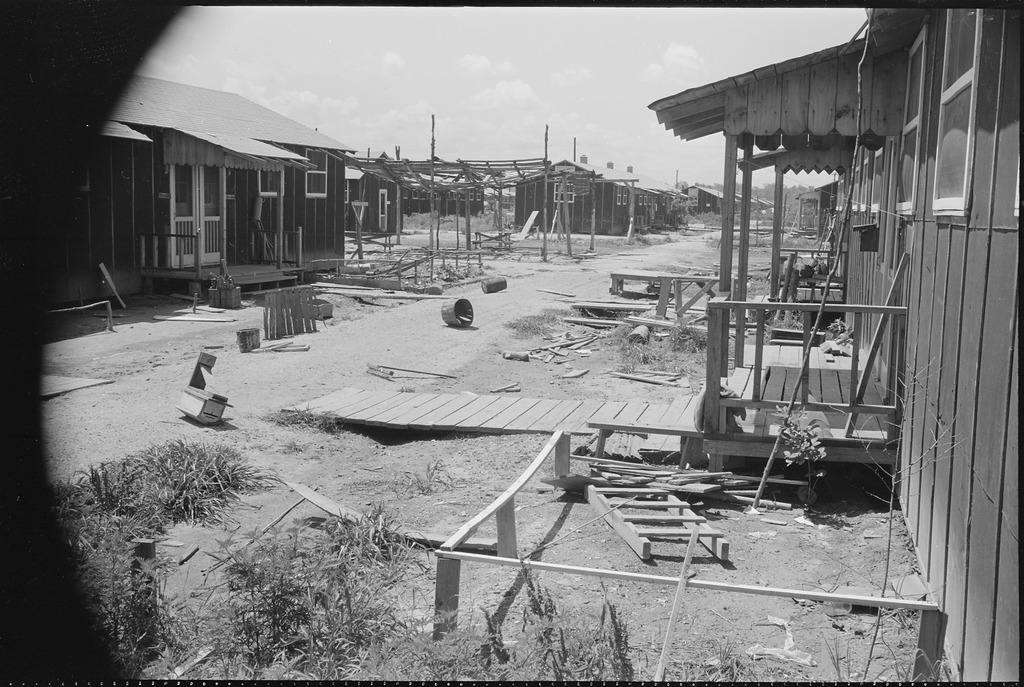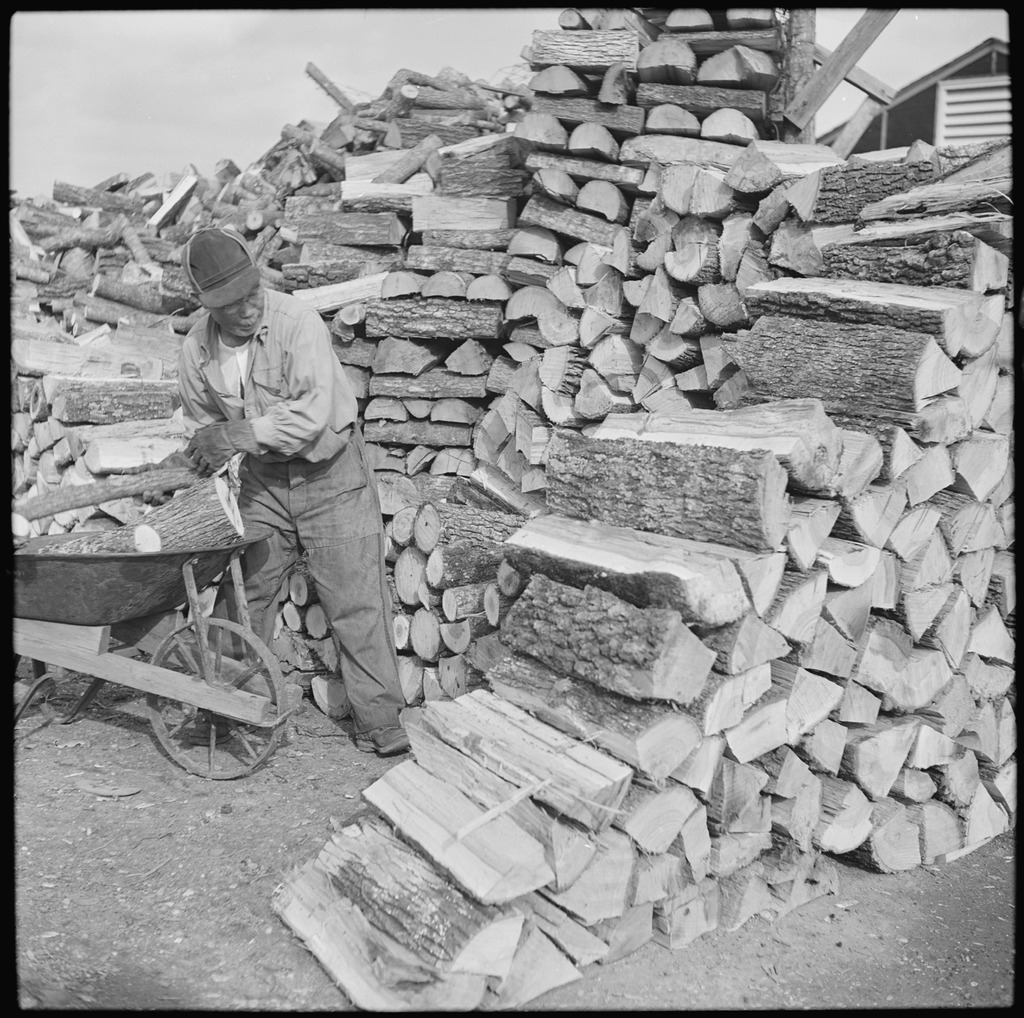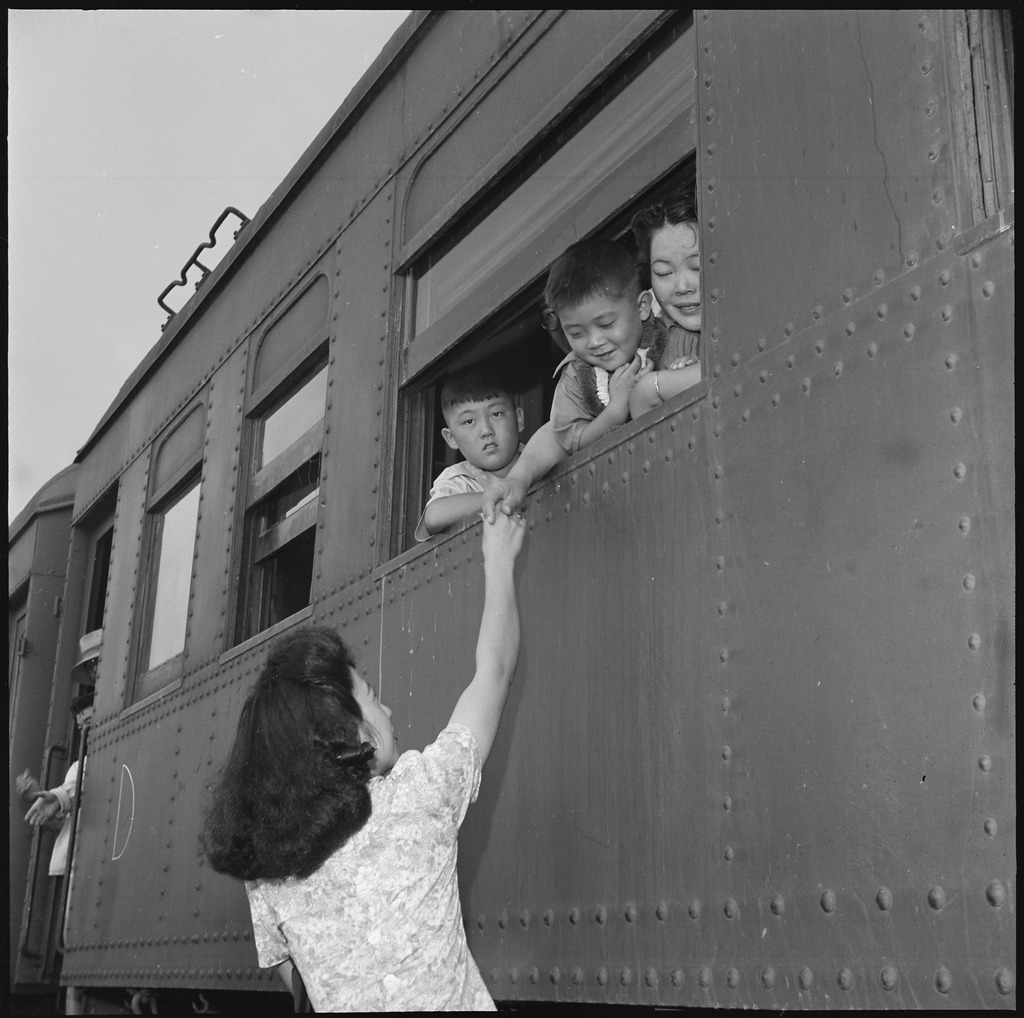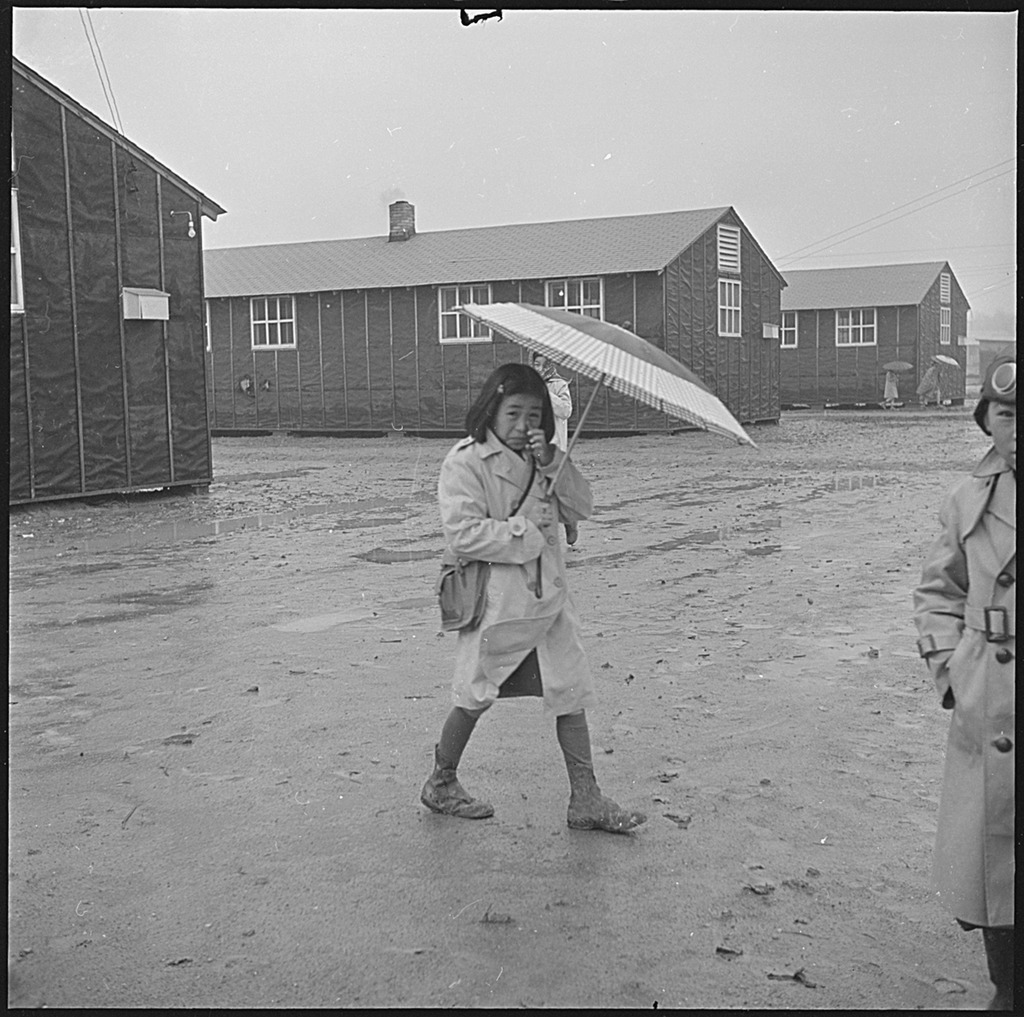April 8, 2021
One of two camps located in southeastern Arkansas—and less than thirty miles from Rohwer, the other such camp—Jerome was the earliest WRA camp to close, shutting down at the end of June 1944. But it was unique in other ways, including a high number of inmates from Hawai`i, a severe flu epidemic in late 1943, and popular local “delicacies” like grilled rattlesnake.
The initial inmate population at Jerome came entirely from California, with about 62% arriving via the Fresno Assembly Center and 38% from the Santa Anita Assembly Center. The Fresno group came mostly from the Fresno area as well as Florin and other areas south of Sacramento, while the Santa Anita group came from Los Angeles, mostly the South Bay and harbor areas and the “Uptown” area west of downtown that is Koreatown today.
Here are ten interesting facts about Jerome that you might not know.
1. The Shortest Life of any WRA Camp
Okay, so you may know this one, but it is worth reiterating: as the last War Relocation Authority (WRA) camp to open and the first to close, Jerome was open for only 634 days — far shorter than any other camp. Amache, the camp that had the second shortest lifespan, was open for 1,146 days, nearly twice as long.
The WRA made the decision to close one of the camps at the end of 1943 as part of its strategy to encourage Japanese Americans to leave. Jerome ended up as the choice for a number of reasons, including its relatively small population; its proximity to Rohwer, where many of its inmates could presumably be transferred; and recent attrition in Jerome’s administrative staff. Jerome’s closing by the end of June 1944 was announced on February 22, 1944.

2. Unfinished Barracks and Missing Toilets Upon Arrival
Given the short interval between the commencement of construction in August and the arrival of inmates in October, Jerome may have been even more unfinished in its early months than other WRA camps. This led to a variety of problems. The first was a difficult and elongated induction process, as workers rushed to finish blocks even as the inmates scheduled to occupy them arrived. Project Director Paul Taylor lamented that during the peak of inmate arrivals at the end of October, “In no single instance was the block to be occupied made available to the WRA until after the train arrived.” This resulted in long waits by inmates after their exhausting, multi-day train rides from California. In one case, inmates on a train that arrived at 6:45 am weren’t allowed to enter their barracks until noon. On another day, they were not situated until 4:30 pm.
Once inmates arrived at their quarters, they found missing windows and beds, “[m]ud piled high in front of barracks,” and “[l]umber strewn all over from uncompleted barracks.” “You know, they moved us before the mess hall was ready or everything,” recalled Yukiko Miyahara in a 2009 interview. In an early November report, Taylor noted that nine of the twenty-six populated blocks lacked functioning mess halls and that in some cases, inmates had to walk over half-a-mile “through mud and water ankle deep” to be fed. Toilets and hot water were also missing in some blocks. Stoves were among the last items to arrive, with the last not being installed until mid-December, well after the advent of cold weather.
There were other unforeseen problems with the unfinished state of the camp. Perhaps due to the haste to complete the plumbing, workers improperly sealed water pipes, leading to widespread dysentery lasting one to three days upon arrival at the camp. The presence of contractors at the site also resulted in conflict with the inmates, as Taylor reported that “contract laborers in here have seemed to take every opportunity to abuse evacuees.”
3. Transfers from Hawai`i
Jerome was one of two WRA camps to receive a substantial number of Japanese Americans who were shipped directly from Hawai`i. (The other was Topaz.) This population included a mixture of people: family members of Issei community leaders who had been interned earlier and who came with the hope of being reunited with husbands or fathers; single men, most of them Kibei, who had been incarcerated at Sand Island; and others who were seen as public charges.
About 800 arrived in three shipments in late 1942/early 1943. A group of 107 who were mostly from Honolulu arrived on November 23, 1942. Another 443 from throughout the islands consisting of both family members of interned Issei and single male internees arrived on January 5, 1943, and 260 more arrived on February 6, 1943, many of whom were fishermen and their families from Kaka`ako who had lost their livelihoods. Arriving in clothing ill-suited to the local climate, other inmates raised money and collected clothing to donate to the group.
The Hawai`i group was mostly assigned to Blocks 38, 39, and 40 and remained a largely separate population, though some of the young men soon gained a reputation for being “troublemakers” among both the inmates and administration. A very high percentage—well over half—ended up being segregated to Tule Lake, contributing to the overall high number of Jerome transfers who were sent there. Many also filed for repatriation to Japan. When Jerome closed in June 1944, about 60% of those from Hawai`i who remained went to Gila River, far more than the 35% of the general population who were transferred there.
4. The Most “Disloyal” Camp?
By WRA metrics of “loyalty,” Jerome was perhaps the worst of the WRA camps, with the lowest rate of “yes” answers to Question 28, the highest rate of segregation to Tule Lake, and the lowest rate of volunteers for the armed forces. The reasons for this were complex, but had to do with inept handling of registration (aka administration of the “loyalty questionnaire”), significant resistance to registration by Jerome inmates, and the influx of the group from Hawai`i.
5. Labor Disputes Over Wood Cutting*

The Arkansas camps were unique in that they relied on burning wood from the surrounding forests for heat. All of the other WRA camps used either heating oil (Gila River, Manzanar, and Poston) or coal (the rest) as fuel for stoves that provided heat in inmate barracks. The rationale was mostly one of cost savings given the ready availability of “free” wood, along with contributing to the PR angle that inmates were creating a largely self-sufficient community. However, WRA administrators’ stubbornness in pushing the wood cutting strategy led to significant labor unrest.
The inmates—the vast majority of whom had no prior experience doing lumberjack work—objected to being compelled to do this physically demanding and dangerous work, particularly at the paltry WRA wages. As early as November 19, 1942—less than three weeks after they had arrived at Jerome—tree cutters launched a strike over the quality of lunches and dissatisfaction with the $12 per month wages. Camp Director Paul Taylor agreed to bump wages up to $16. A month later, six wood cutting crews totaling about seventy-five men started a work slowdown, resulting in Taylor firing them.
The wood cutting situation was described as “dire” by January 1943, as “[f]uel already in the blocks was approaching the zero point” and inmate fears were “pointing to the possibility of mass hysteria,” according to the “Fuel” final report. Further coercion and the shifting of other workers to wood cutting duty followed. Later, in October 1943, after a trailer carrying inmate woodcutters to their jobs overturned, killing one man and sending twenty to the hospital, calls for a general strike circulated. Labor organizers put up flyers in the latrines calling for a general strike on October 25 and demanding better working conditions, higher wages, backup supplies of coal, and the removal of Taylor. Though the strike did not occur, the organizers did get one of their demands, as Taylor resigned as director a month later.
6. The Nisei Soldier Connection*

Despite the low numbers of Nisei from Jerome who volunteered for the army, Jerome (along with Rohwer) had perhaps the closest connection to the Nisei soldiers due to its proximity to Camp Robinson, Arkansas, and Camp Shelby, Mississippi. The 100th Battalion, made up of Nisei soldiers from Hawai’i, and later, the 442nd Regimental Combat Team, trained at the latter, which was about 250 miles southeast of Jerome.
In response to requests by the soldiers to visit the camp, a group of inmates led by Mary Nakahara (later known as Yuri Kochiyama), Mary Tsukamoto, and Amy Murayama started a USO. The USO formally opened on June 21, 1943. From July 1943 until March 1944, busloads of soldiers would arrive every weekend for a Saturday night dance and Sunday ochazuke party. In addition to the organized groups, individual soldiers dropped in from the two nearby camps as well as from eleven other army camps. By April of 1944, the peak of activity, some 400 to 600 visitors a week were coming to the USO.
While the soldiers no doubt welcomed the visits, many inmates did as well. Masamizu Kitajima, who was ten years old at the time, recalled the special bond the Hawai’i inmates had with the many soldiers from Hawai’i. “They want to come to see Hawai’i, Hawai’i people, so every week until they shipped out they came,” he recalled. “And they would always bring presents for the kids and for us kids and stuff like that.” Traffic flowed the other direction as well, as young women from Jerome and Rohwer took regular trips to Camp Shelby to attend dances with the soldiers. Nakahara also organized the Crusaders, various groups of young women in Jerome who wrote to thousands of Nisei soldiers in training and overseas.
7. A Kobu Craze*
Many of the WRA camps had a characteristic crafting “craze.” At the Arkansas camps, it was the collecting of “kobu,” gnarled wood growths on trees, most notably the “knees” of cypress trees. Inmate artisans—the preponderance seemed to be Issei men—would explore the forests outside the camp collecting kobu, then painstakingly polish and mount them or craft them into utilitarian objects.
Though these excursions were presumably against the rules, camp administrators recognized them as harmless activities and gave tacit approval, even sponsoring kobu contests. In a sign of how widespread the fad had become—and perhaps the gender dynamics behind it—Akiko Yamanaka wrote in a sardonic essay in the Denson Magnet, a camp magazine, “If you are one of the many patient ladies who is tired of seeing stump after stump of gnarled, decayed pieces of wood in your room, tired of cleaning up the shavings and saw-dust of the same left on the floor, and tired of agreeing with him that they’re simply beautiful, it’s high time for you to go into action,” before suggesting women chuck the kobu into the stove to serve as fuel.
8. Local Delicacies?*
The unique climate and topography of the Arkansas camps led to some unique foraging opportunities. In his 1964 autobiographical novel Hawaii: End of the Rainbow, Kazuo Miyamoto wrote of the inmates from Hawai`i venturing into the woods to collect naba (auricularia cornea, popularly known as wood ear fungus), a type of fungus that also grew in Hawai’i and that was eaten by locals. “Last winter, it was the Hawaiian boys who first began collecting them and then the entire camp caught on,” wrote Miyamoto. He also wrote about? snakes and how some inmates cooked rattlesnake in the manner of Japanese eel, kabayaki style. Curious to try this, Miyamoto’s fictional alter ego, Murayama, acquires a snake and a neighbor grills it for the block. Murayama pronounces it “delectable and luscious.”
9. A Flu Epidemic
Jerome was hit with a number of health crises, the biggest of which was a severe flu epidemic that broke out in December 1943. When the case count hit five hundred as Christmas approached, Assistant Project Director Rune E. Arne called for a ban on all public gatherings, though block Christmas parties were excepted for some reason. The reopening of schools in 1944 after the holiday break was also briefly postponed. In the end, there were 888 cases at Jerome. The only other camp to suffer a similar epidemic was Topaz, which registered around 1,100 cases in January 1944.
Jerome also had two syphilis outbreaks, twelve malaria cases, two of typhoid fever (the only ones in any WRA camp), and 394 cases of conjunctivitis, the most of any WRA camp.
10. Closing Choices

With the planned June 1944 closing of Jerome, the WRA determined that Jerome inmates would be transferred to one of four camps—Rohwer, Gila River, Amache, and Heart Mountain—and distributed a “preference questionnaire” through block managers where inmates could list their preferred destinations. But inmate preferences did not match destination camp capacities, with Rohwer and Amache in particular having many more people who wanted to go there than there was available space. Committees of administrative staff made the final determinations, with priority being given to those with health-related issues, families that had members in the armed forces, and moves that would reunite or keep together families.
In the end, 2,750 transferred to Rohwer, 2,077 to Gila River, 587 to Amache, and 507 to Heart Mountain. Those who transferred to Rohwer traveled the twenty-seven miles by bus or truck. The others left in six trainloads at the end of June, with the last group leaving on June 24, although a “post contingent” of 307 stayed behind to help close down the camp. About one hundred of Jerome’s WRA staff transferred to other camps.
—
By Brian Niiya, Densho Content Director
Want to find out more about Jerome? Make sure to tune into Japanese American Memorial Pilgrimages’ virtual Jerome/Rohwer Pilgrimage on April 10th and 11th! (And keep an eye out for a discussion about the experiences of the Hawai’i transfers with Brian Niiya and a panel of former Jerome incarcerees, on Sunday, 4/11 at 3pm PDT.) Learn more at: https://www.jampilgrimages.com/2021-jeromerohwer-virtual-pilgrimage
The information presented here has been excerpted from Densho’s new and improved Sites of Shame project, coming to a device near you later this year. Full citations will be included there, but feel free to post questions in the comments or email us at info@densho.org in the meantime!
*These also apply to Rohwer.
[Header photo: Original WRA caption: “Jerome Relocation Center, Denson, Arkansas. The Arkansas rainy season, and this young resident of the Jerome Center dons rubber boots and carries a parasol. The (buckshot) mud makes the trip to and from school a little difficult.” Photo by Tom Parker, courtesy of the National Archives and Records Administration.]
